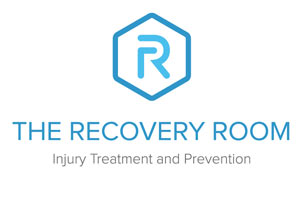The human body is a marvel of intricate design and complex functions.
It possesses the remarkable ability to heal itself, but what if there was a way to accelerate this natural healing process? This is where shockwave therapy comes into play, as a groundbreaking technique that harnesses the body’s innate potential for recovery. In this comprehensive guide, we will delve into the world of shockwave therapy, exploring its applications, benefits, and potential impact on various health conditions.
Understanding Shockwave Therapy
Shockwave therapy is a non-invasive treatment modality that involves the application of targeted pressure waves to specific areas of the body. These acoustic waves carry high energy, promoting regeneration and reparative processes within tissues. By stimulating the body’s natural healing mechanisms, shockwave therapy facilitates tissue regeneration, alleviates pain, and enhances overall recovery.
How Shockwave Therapy Works
Using specialized equipment, shockwave therapy delivers acoustic pulses to the affected area. These pulses prompt an increase in blood flow, stimulating metabolic activity and the release of healing factors. The intensified cellular activity leads to tissue regeneration, aiding in the repair of damaged or injured tissues. This process fosters the body’s ability to heal itself, promoting long-term recovery and alleviating discomfort.
Applications in Orthopedics
In the field of orthopedics, shockwave therapy has gained prominence for its efficacy in treating various musculoskeletal conditions. From addressing tendon injuries to promoting bone healing, this therapy has shown promising results in accelerating the recovery process for patients suffering from orthopedic ailments. Its non-invasive nature and minimal recovery time make it a desirable option for individuals seeking effective treatment without the need for invasive procedures.
Addressing Chronic Pain with Shockwave Therapy
Chronic pain can significantly impact one’s quality of life, often leading to physical and emotional distress. Shockwave therapy presents a potential solution for individuals struggling with persistent pain. By targeting the source of the pain and stimulating the body’s regenerative processes, this therapy can provide relief and improve overall well-being. Its ability to alleviate chronic pain without the use of pharmaceuticals or invasive procedures makes it a promising alternative for long-term pain management.
Boosting Muscle Regeneration
Muscle injuries can be a hindrance to an active lifestyle and athletic pursuits. Shockwave therapy has demonstrated its efficacy in promoting muscle regeneration, aiding in the repair of damaged muscle fibers and enhancing muscle function. Athletes and fitness enthusiasts have increasingly turned to this therapy for its potential to expedite muscle recovery, enabling them to return to their activities with reduced downtime and improved performance.
Shockwave Therapy for Tendon Issues
Tendon issues, such as tendinitis and tendonosis, can impede mobility and cause persistent discomfort. Shockwave therapy offers a targeted approach to address these tendon-related concerns. By promoting collagen production and enhancing the healing process within the tendons, this therapy aids in the restoration of tendon function and alleviation of associated symptoms. It serves as a valuable non-surgical option for individuals grappling with tendon issues.
Effectiveness in Managing Plantar Fasciitis
Plantar fasciitis, a common cause of heel pain, can limit mobility and impact daily activities. Shockwave therapy has emerged as a promising treatment option for individuals affected by this condition. By targeting the inflamed tissue in the foot, this therapy stimulates the healing process, reducing pain and improving overall foot function. Its ability to provide relief from plantar fasciitis has made it a sought-after choice for individuals seeking long-term solutions for this persistent foot ailment.
Exploring Benefits for Erectile Dysfunction
Beyond its applications in musculoskeletal conditions, shockwave therapy has shown promise in addressing certain cases of erectile dysfunction. By promoting increased blood flow and neovascularization in the penile tissues, this therapy can enhance erectile function and improve overall sexual performance. Its non-invasive nature and potential to provide lasting effects have positioned shockwave therapy as a potential alternative or complementary treatment for individuals experiencing erectile dysfunction.
Safety and Side Effects Considerations
While shockwave therapy is generally considered safe, it is essential to be aware of potential side effects. Some individuals may experience temporary discomfort, redness, or swelling in the treated area. However, these effects are typically mild and transient. It is crucial to consult a qualified healthcare professional to determine the suitability of shockwave therapy for specific health conditions and ensure appropriate guidance throughout the treatment process.
Integrating Shockwave Therapy with Conventional Treatment
In certain cases, integrating shockwave therapy with conventional treatment approaches can yield comprehensive and effective results. By combining the benefits of shockwave therapy with other established treatment modalities, healthcare professionals can provide tailored and holistic care for patients. This integrative approach maximizes the potential for successful outcomes, promoting enhanced healing, and improved overall well-being.
Frequently Asked Questions (FAQs)
What conditions can be treated with shockwave therapy?Shockwave therapy can be utilized for various conditions, including musculoskeletal injuries, chronic pain, and certain cases of erectile dysfunction.
Is shockwave therapy a painful procedure?While some individuals may experience mild discomfort during the procedure, it is generally well-tolerated and does not require anesthesia.
How many sessions of shockwave therapy are typically needed for optimal results?The number of sessions can vary depending on the specific condition being treated. Healthcare professionals will determine the appropriate treatment plan based on individual needs and response to therapy.
Are there any specific precautions to follow after undergoing shockwave therapy?Following post-treatment guidelines provided by the healthcare provider is crucial for ensuring optimal recovery and maximizing the benefits of the therapy.
Is shockwave therapy suitable for individuals of all age groups?While shockwave therapy is generally safe, it is essential to consult a healthcare professional to assess its suitability based on individual health factors and medical history.
Shockwave therapy stands as a pioneering approach that taps into the body’s inherent healing abilities, offering a range of therapeutic benefits across various health domains. With its non-invasive nature, minimal side effects, and potential to complement conventional treatment methods, it continues to pave the way for enhanced healing and improved well-being for individuals seeking effective and comprehensive healthcare solutions. Embrace the potential of shockwave therapy and unlock the healing power within.





